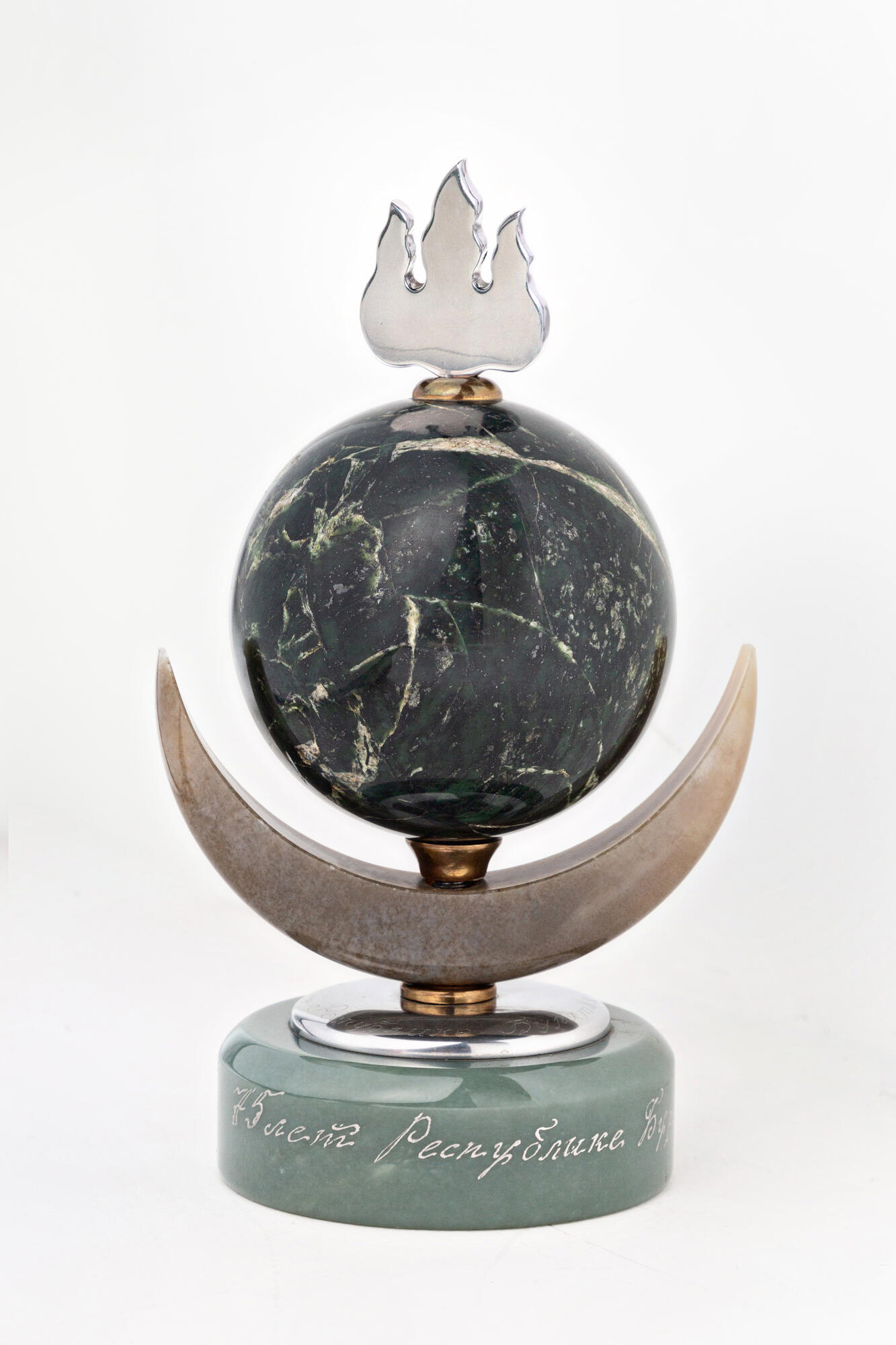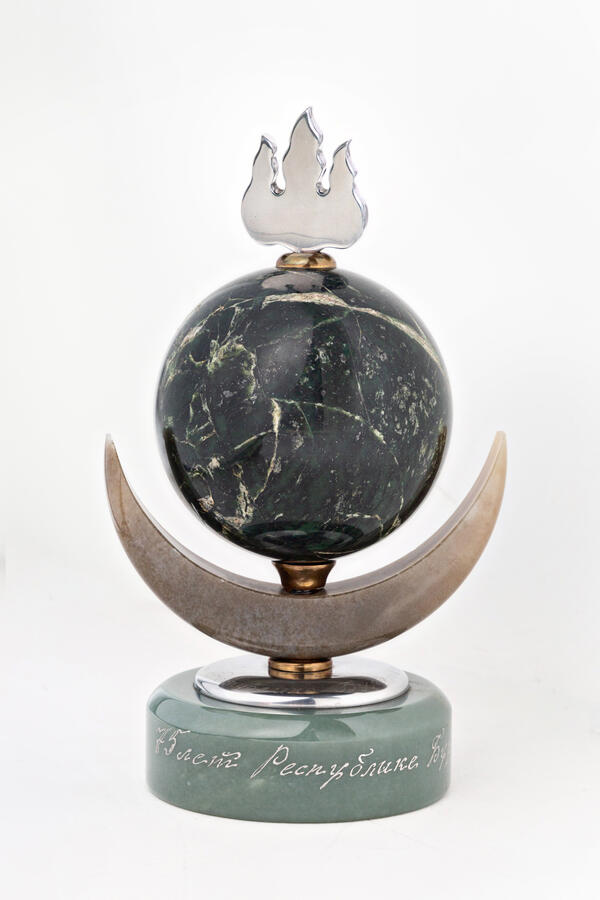The soyombo souvenir is made of jade, one of the most famous ornamental stones. In the Republic of Buryatia, there are approximately 13 deposits of jade out of 16 explored in Russia. The deposits are located in the Muyskiy, Bauntovskiy, Okinskiy, Tunkinskiy, and Zakamenskiy Districts. Depending on the chemical composition, the color of jade varies from milky white, yellow, and green to gray and black. It is believed that the world’s best green jade is extracted in the Eastern Sayan, and white jade that is especially valued by Chinese jewelers is extracted on the Vitim River in the North-East of Buryatia.
The name of the mineral comes from the Greek “nephros”, which means “kidney”. According to an old belief, jade reduces renal colic and pain in the liver. The art of artistic jade carving originated in China. There it was valued so much that jade plaques were used as coins, and paired plates served as a passport for the Emperor’s messengers. Balls, vases, bowls, goblets, caskets, and animal figures were carved from this mineral. Many jade products are stored in the main museum of the country, the Hermitage.
Altan soyombo is a traditional symbol of Buryatia depicted on the national flag of the republic. The Buryat soyombo consists of three elements, namely: the moon, the sun, and fire. The moon located at the bottom forms a kind of bowl, over which the sun rises, and above it three flames flutter.
Fire means not only warmth, life, rebirth, well-being, or hearth, but is considered a symbol of purity. In ancient times, sacrifices were made to it. With the help of fire, shamans healed the sick by exorcising evil spirits from them. Buryats have always treated fire with great respect. The three flames were also chosen for a reason. The front tongue is a symbol of the past, the middle one represents the modern generation, and the third one represents future generations. Together, they emphasize the integrity and continuity of history.
The sun is also one of the most ancient symbols, and its image has become widespread among the peoples of the world. It is the source of life, vitality, light, wealth, and abundance.
The Mongol, Turkic and Northern Asian peoples considered the moon to be the main luminary and called it the Father Moon. Based on the phases and cycles of the moon’s movement, the system of Eastern chronology was built, and a calendar was created. This is why this sign is placed first in soyombo.
The name of the mineral comes from the Greek “nephros”, which means “kidney”. According to an old belief, jade reduces renal colic and pain in the liver. The art of artistic jade carving originated in China. There it was valued so much that jade plaques were used as coins, and paired plates served as a passport for the Emperor’s messengers. Balls, vases, bowls, goblets, caskets, and animal figures were carved from this mineral. Many jade products are stored in the main museum of the country, the Hermitage.
Altan soyombo is a traditional symbol of Buryatia depicted on the national flag of the republic. The Buryat soyombo consists of three elements, namely: the moon, the sun, and fire. The moon located at the bottom forms a kind of bowl, over which the sun rises, and above it three flames flutter.
Fire means not only warmth, life, rebirth, well-being, or hearth, but is considered a symbol of purity. In ancient times, sacrifices were made to it. With the help of fire, shamans healed the sick by exorcising evil spirits from them. Buryats have always treated fire with great respect. The three flames were also chosen for a reason. The front tongue is a symbol of the past, the middle one represents the modern generation, and the third one represents future generations. Together, they emphasize the integrity and continuity of history.
The sun is also one of the most ancient symbols, and its image has become widespread among the peoples of the world. It is the source of life, vitality, light, wealth, and abundance.
The Mongol, Turkic and Northern Asian peoples considered the moon to be the main luminary and called it the Father Moon. Based on the phases and cycles of the moon’s movement, the system of Eastern chronology was built, and a calendar was created. This is why this sign is placed first in soyombo.



